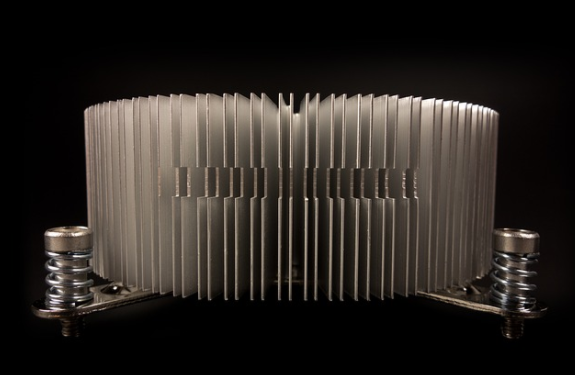Release time: September 05, 2025
Views: 199

Semiconductor thermoelectric cooling (TEC) has emerged as a transformative technology in thermal management, offering precise, efficient, and scalable solutions across industries. Unlike traditional compressor-based systems, TEC leverages the Peltier effect to enable solid-state temperature control without refrigerants or moving parts.
This article explores the technical advancements, industry trends, and unique advantages of TEC technology, positioning it as a critical enabler for next-generation applications.
TEC technology operates on the Peltier effect, where an electrical current creates a temperature gradient across semiconductor junctions. Key technical characteristics include:
· Bidirectional Temperature Control: A single module can both cool and heat by reversing polarity, enabling dynamic thermal regulation.
· Precision and Stability: Modern TEC systems achieve temperature control within ±0.1°C, critical for applications like medical diagnostics and laboratory equipment.
· Solid-State Reliability: With no moving parts, TEC modules offer silent operation, reduced maintenance, and longer lifespans compared to compressor-based systems.
Industry Impact: The absence of refrigerants aligns with global sustainability goals, making TEC an eco-friendly alternative in an era of tightening environmental regulations.
ØTEC systems consume 30–50% less energy than conventional vapor-compression refrigeration for low-to-medium cooling loads (<500W).
ØTheir modular nature allows integration into space-constrained devices, such as portable medical instruments and UAV avionics.
ØThermal response times are orders of magnitude faster than liquid-based systems,enabling real-time temperature adjustments.
ØPrecision is critical in pharmaceutical storage,laser systems, and microelectronics, where ±1°C fluctuations can compromise performance.
· No reliance on hazardous refrigerants (e.g., CFCs or HFCs), reducing regulatory compliance burdens.
· Intrinsic safety (no flammable components) suits medical and aerospace applications.
· PCR and Lab Automation: TEC’s rapid cycling capability (±0.1°C stability) is indispensable for DNA amplification and reagent handling.
· Point-of-Care Devices: Compact TEC modules enable portable diagnostic tools with precise thermal control.
· 5G and Edge Computing: TECs mitigate thermal throttling in high-density electronics, ensuring consistent performance.
· Laser Diodes and Optoelectronics: Active cooling prevents wavelength drift, extending device lifespans.
· Battery Thermal Management: TECs maintain optimal temperatures for lithium-ion batteries in extreme environments, enhancing safety and longevity.
· Satellite Systems: Their vibration resistance and reliability make TECs ideal for space-constrained thermal control.
· Efficiency at Scale: TEC systems face diminishing returns for cooling loads >1kW, where compressor-based systems remain dominant.
· Material Science Barriers:Thermoelectric materials (e.g., Bismuth Telluride) are costly and face trade-offs between efficiency and durability.
· Nanostructured Materials:Research into superlattice thermoelectric materials promises higher efficiency (ZT > 2.0) and lower costs.
· Hybrid Systems:Combining TECs with phase-change materials or heat pipes could bridge the gap for high-capacity applications.
· AI-Driven Thermal Management: Machine learning algorithms optimize TEC performance in real-time, adapting to dynamic heat loads.
Semiconductor thermoelectric cooling represents a paradigm shift in thermal management, driven by its precision, sustainability, and versatility.
While material and scalability challenges persist, ongoing advancements in nanotechnology and system integration are expanding its reach into high-growth sectors like healthcare, electronics, and renewable energy.
As industries prioritize energy efficiency and miniaturization, TEC technology is poised to become a cornerstone of next-generation thermal solutions.
![]() Contact Our Thermal Experts:
Contact Our Thermal Experts:
📞 +86 18575222950 (WeChat/WhatApps)
📧 EMAIL: sale02@hj-tc.com
🌐 Browse products: https://www.huajingtc.com (Huajing Cooling Solutions)
Optimize your UAV & Laser & Beauty system's performance with Huajing's advanced thermoelectric cooling technology.
Looking for more
information?

0755 23405284
Email: sale02@hj-tc.com
Add: 3/F No.5 Building,Yesun Pingshan Life and Health Technology Park, No. 19 Linhui Road,Pingshan District, Shenzhen, Guangdong,CN.
©2019- 2024 Huajing Co.,Ltd.Copyright